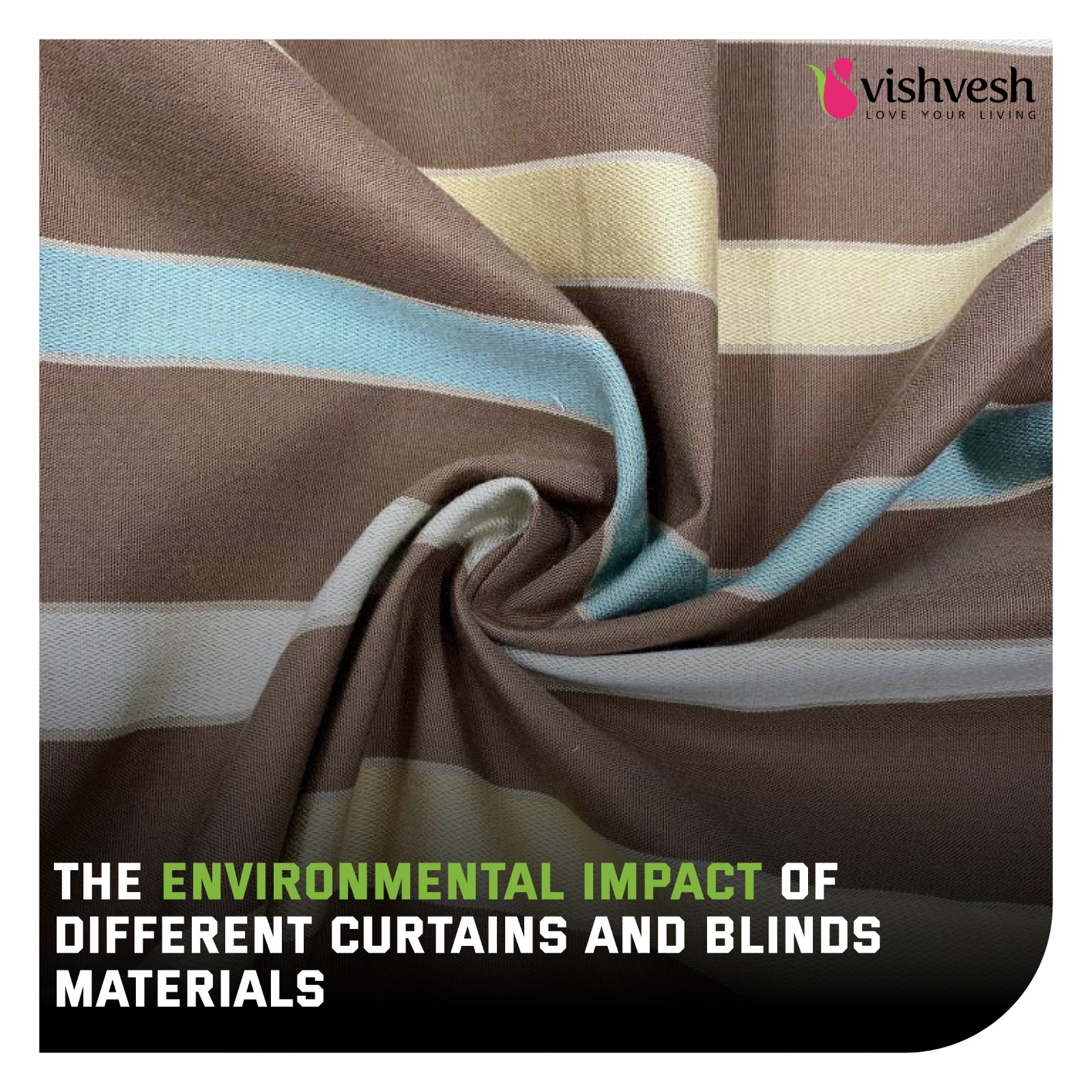In this day and age, every decision we make can have a lasting impact on the environment. This includes the choices we make when it comes to window treatments. From manufacturing to disposal, the production and use of curtains and blinds can contribute to environmental degradation and depletion of resources. In order to make eco-friendly choices, it is crucial to understand the environmental impact of the various materials used in curtains and blinds.

Natural Fabrics:
The utilisation of natural fabrics in window treatments is a recurrent theme in the decor and design industry. Two of the most sought-after natural fabrics for curtains and blinds are cotton and linen. Both materials are commended for their durability, breathability, and easy maintenance, but what about the environmental footprint they leave behind? The intricate details behind cotton and linen production, from their water, pesticide, and fertiliser requirements to their biodegradability, make for a perplexing and bursty narrative of environmental impact in the realm of window coverings.
Synthetic Fabrics:
The utilisation of synthetic fabrics in curtains and blinds is an environmentally problematic phenomenon that must be addressed. Polyester and nylon, two of the most commonly utilised synthetic materials, are favoured for their affordability, resilience, and low maintenance needs.
However, the ramifications of producing these man-made fibres are devastating and include air contamination, water contamination, and the emission of harmful greenhouse gases. Furthermore, the ominous truth remains that these synthetic materials are not biodegradable, which means they will persist in our environment for countless centuries to come, posing an ever-growing threat.
Bamboo Blinds:
The trend of environmental consciousness has resulted in an upsurge of interest in bamboo blinds, a window covering option renowned for its sustainable and eco-friendly nature. The rapid rate of regrowth of bamboo, in contrast to slow-growing traditional hardwoods, makes it a renewable resource that is gentle on the environment. Furthermore, the low consumption of water, pesticides, and fertilisers during its growth cycle contributes to the reduced impact on the planet, thereby making it a favourable alternative to other materials.
Not only are bamboo blinds a responsible choice in terms of sustainability, they also exhibit robustness and charm. This, combined with their versatility to adapt to any decor by means of staining or painting, makes them a favourite among property owners and commercial entities. The ease of cleaning and maintaining bamboo blinds is another attribute that adds to their overall appeal.
Recyclable Materials:
Window coverings play a vital role in defining the aesthetic and functional appeal of homes and workplaces. However, not many are aware of the impact that the materials used to manufacture these curtains and blinds can have on the environment. Utilising recycled materials in window coverings not only offers an eco-friendly solution, but it also brings forth a range of other benefits that are often overlooked. From reducing waste to conserving natural resources, recycled materials offer a sustainable alternative to traditional window covering materials.

Conclusion:
In the quest for a sustainable window covering solution, choosing the right curtains and blinds can make a huge difference for the environment. The materials used for their manufacture can range from resource-intensive natural fabrics to non-biodegradable synthetic materials. But, the dilemma of balancing style, durability, and sustainability can be easily solved by opting for eco-friendly alternatives like bamboo blinds or recycled materials. So, next time you’re looking to update your windows, consider the impact your choices can have on the planet, and choose wisely!







